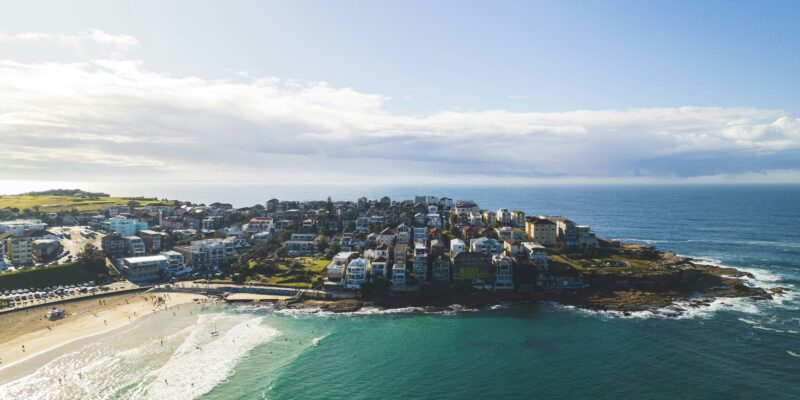10 Fastest Growing Australian Suburbs in 2025: Beyond Tarneit and Pimpama
Tarneit in Victoria and Pimpama in Queensland became shorthand for Australia’s population boom. In 2025 the momentum has widened. Fresh ABS local‑area figures point to a new wave of growth corridors on the edges of Melbourne and Sydney, with supporting signs in Perth and South‑East Queensland.

TARNEIT in Victoria and Pimpama in Queensland became shorthand for Australia’s population boom. In 2025 the momentum has widened. Fresh ABS local‑area figures point to a new wave of growth corridors on the edges of Melbourne and Sydney, with supporting signs in Perth and South‑East Queensland. For conveyancers, the shift means more files, tighter critical paths, and a different mix of titles and disclosures.
What counts as “fastest growing” in 2025
We use the latest ABS Estimated Resident Population at Statistical Area Level 2, the 12 months to June 2024, because it is the most current suburb‑scale lens to plan against in 2025. Ranking by numeric population increase, not just percentage change, highlights where service demand and settlement volumes are most likely to surge. Tarneit and Pimpama still matter, but we have set them aside to focus attention on other corridors conveyancers will need to resource this year.
Three forces are doing most of the lifting. First, greenfield supply and relative affordability continue to pull first‑home buyers and upgraders to the edges of Melbourne and Sydney. Second, infrastructure is switching on, with new rail and road capacity bringing schools, retail and health services behind the rooftops. Third, internal migration is doing more of the work in the biggest risers, which implies sustained family demand rather than short student cycles.
The Suburbs came out on-top:
The numbers below refer to 12‑month population increases to June 2024 at SA2 level. They are a small part of the story, so we include why each area is growing and what that means in practice.
- Fraser Rise / Plumpton, VIC
Increase: about 4,300 people. Why it is rising: an established pipeline of estates west of Melbourne, mortgage‑owner households well above average, and family‑sized product at prices below the city median. Implication for files: a steady flow of house‑and‑land and small‑lot titles, with covenants, easements and staged registrations common. - Rockbank / Mount Cottrell, VIC
Increase: about 4,100. Why: continued land release, proximity to Western Freeway and Melton growth, and services catching up. Implication: off‑the‑plan timing is tight, so watch sunset clauses and builder timing in special conditions. - Box Hill / Nelson, NSW
Increase: about 4,000. Why: North‑West Sydney’s master‑planned communities, with improving arterial access and a maturing retail and school footprint. Implication: mixed stock, from detached homes to medium density, which lifts the variety of enquiries and by‑laws to check. - Clyde North South, VIC
Increase: about 3,900. Why: the south‑east corridor continues to densify around new schools and town centres. Implication: rising townhouse share, more owners corporations, and frequent questions on developer rebates and incentives. - Marsden Park / Shanes Park, NSW
Increase: about 3,500. Why: northern growth area supply and better road links, drawing upgraders seeking more space. Implication: larger blocks bring covenant checks, and staged infrastructure means clients often seek clarity on future amenity. - Mickleham / Yuroke, VIC
Increase: about 3,400. Why: strong natural increase and continued estate delivery on Melbourne’s northern fringe. Implication: frequent off‑the‑plan settlements and a high share of first‑home buyers who need plain‑English guidance on cooling‑off and deposits. - Wollert, VIC
Increase: about 2,800. Why: steady greenfield expansion with a mix of townhouse and detached options. Implication: owners corporation documentation and plan of subdivision checks are routine, with drainage and service easements recurring. - Cranbourne South, VIC
Increase: about 2,700. Why: maturing estates and spillover from nearby growth nodes. Implication: uplift in infill‑style transactions alongside greenfield titles, which adds variation in due diligence. - Schofields East, NSW
Increase: about 2,700. Why: rail access and continuing delivery of both infill and new estates north‑west of Sydney. Implication: by‑law reviews for strata, plus frequent enquiries about noise, traffic and privacy around new transport. - Austral / Greendale, NSW
Increase: about 2,700. Why: proximity to Western Sydney Airport and road upgrades, with precinct‑level plans bringing services forward. Implication: disclosure on infrastructure staging and potential resumptions is critical in client conversations.
Not far behind: Ripley in Queensland, Caloundra West and Chambers Flat in South‑East Queensland, Alkimos / Eglinton in Perth’s north, and Munno Para West / Angle Vale in Adelaide’s north are all moving quickly and deserve monitoring.
Why this matters for conveyancers
Higher volumes are the headline, but the real workload comes from complexity. Rapid build‑out compresses the path from civil works to titles and settlement. That raises the stakes on dealing searches, plan registrations and extensions of time. Infrastructure projects unlock amenity, but they also bring staging, traffic change and disclosure risk. Finally, buyer mix skews to first‑home buyers, so clear guidance on rebates, incentive mechanics and sunset rights reduces call‑backs and avoids last‑minute surprises.
Risks to keep an eye on
Service capacity can lag population, which can spook buyers and slow exchanges. Builder failures and cost volatility still ripple through the pipeline, showing up as timing pressure and amendment requests. Rental demand is uneven across corridors, so investor expectations need careful framing.
TLDR: The fastest growing areas in 2025 are concentrated on Melbourne’s western and south‑eastern edges and Sydney’s north‑west and south‑west. These corridors are being driven mainly by internal migration, supported by greenfield land supply and new infrastructure. For conveyancers, the practical impact is higher file volumes, more off‑the‑plan settlements, and more complex disclosure around staging and amenity.

